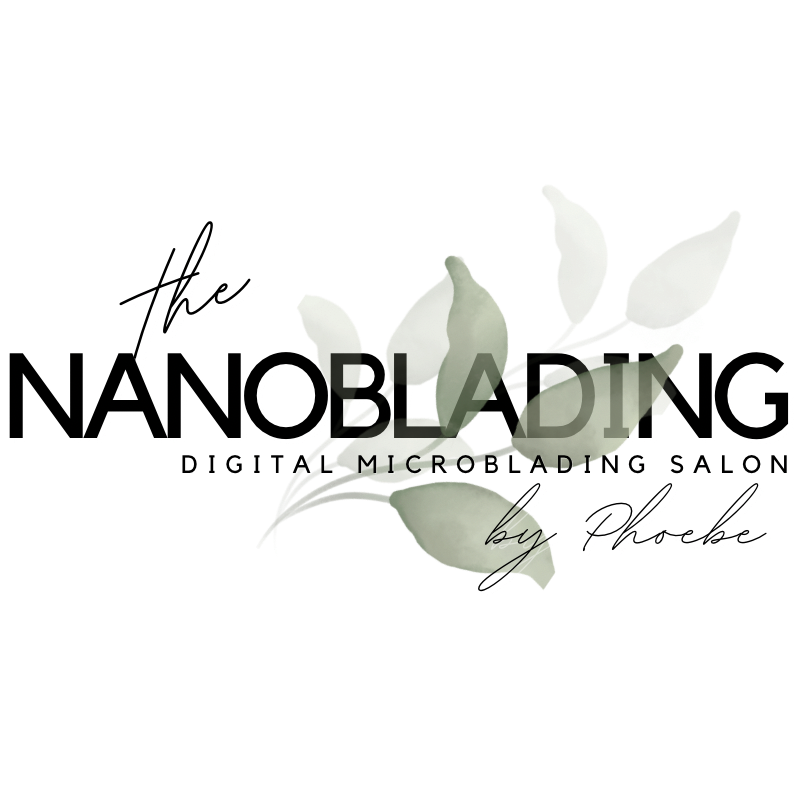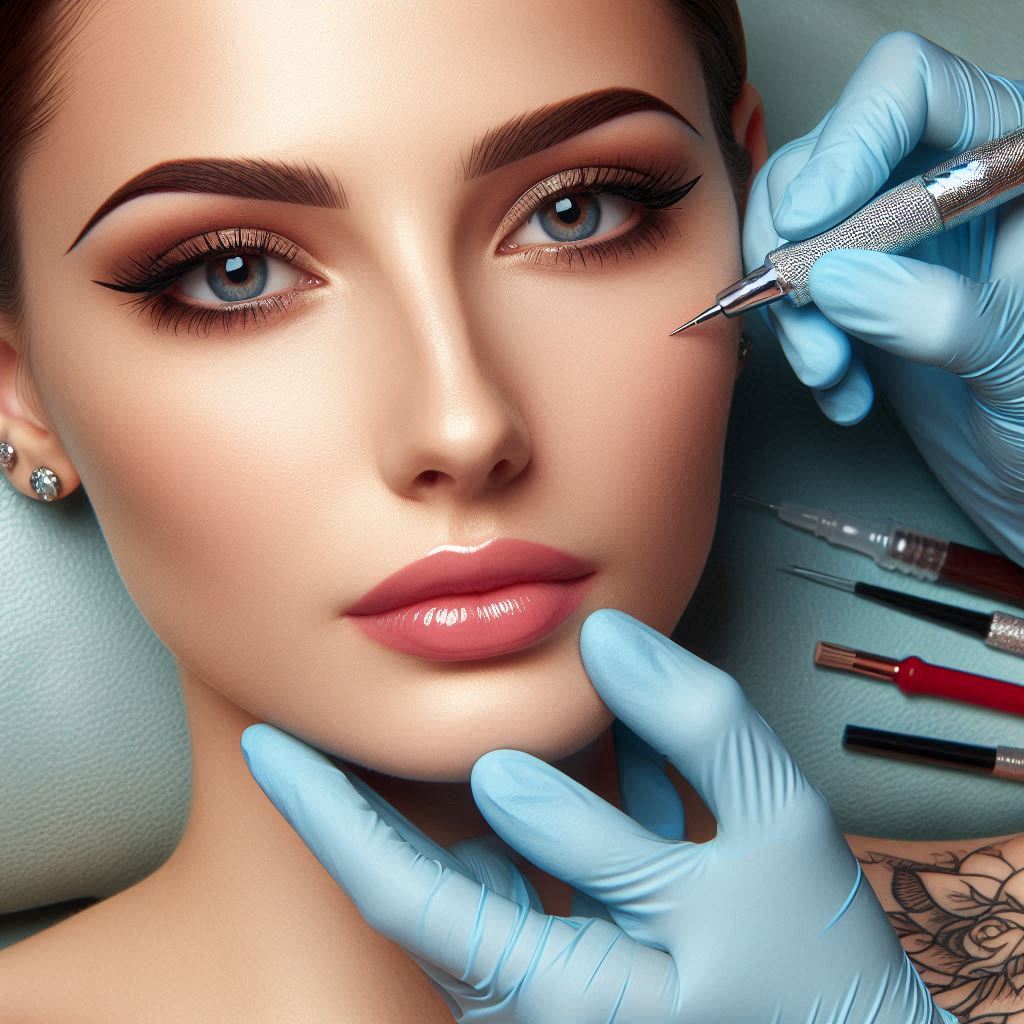In this busy world we live in today, it’s hard to get a perfect look all over again every single day. Meet permanent makeup, a trick to get all your features enhanced without taking time from your makeup. Whether you’re sick of redrawing your eyebrows each morning, waking up with perfectly defined lips, or simply ready for something that lasts, this could be the solution you’ve been seeking. But how, exactly, does permanent makeup work? In this complete guide, we’ll cover all you need to know — from the top process and types to after-care and costs. Let’s dive in!
What Is Permanent Makeup?
Permanent makeup, or cosmetic tattooing, is an aesthetic technique that involves implanting pigments into the dermal layer of the skin to create or enhance facial features. In contrast to regular makeup, which needs to be removed each night, permanent makeup provides long-lasting effects, making it a good option for busy people.
How Is It Different From Conventional Makeup and Tattoos?
Traditional Makeup: It is used every day and cleansed off with a cleanser or makeup remover.
Body Tattoos: These are used in deeper ink penetration and are used for artistic and/or symbolic representation.
Permanent Makeup: Utilizes special pigments and methods for gradual, natural-looking improvements such as brows, eyeliner, and lip color.
Common applications include:
Eyes: Defining: Filling sparse gaps creates a defined look.
Eyeliners: Adding definition to the eyes.
Lips: Adding color to the lip or correcting asymmetry.
What to Expect During the Permanent Makeup Process
Step 1: Consultation
It starts with a consultation. This is your chance to talk about your goals, ask questions, and make sure you’re on board with the procedure. An experienced artist will adjust to your skin type, face elements, and results required to devise a personalized approach.
Step 2: Design and Mapping
The next step is for the artist to sketch the design. If you were getting microblading for your eyebrows, for instance, they’d measure and draw the shape so that it’s symmetrical and balanced. This is an important step as it will provide the base for the outcome.
Step 3: Application
With a handheld device or microblading tool, the tattoo artist inserts pigment into the skin. It’s a laborious process, as the artist meticulously builds up strokes to replicate real hair, or soft lines when adding cream blush. They are usually done under a numbing cream to avoid any pain.
Step 4: Healing and Touch-Ups
Following the procedure, your skin will require time to heal. It’s normal to have scabbing and peeling during an initial healing period in the first few weeks. A follow-up visit is typically scheduled 4-6 weeks later to touch up any areas where the pigment may have lightened.
Types of Permanent Makeup
Microblading: Creates natural hair-like strokes.
Powder Brows: Softer, powdered effect for a fuller look.
Combination Brows: A blend of microblading and powder brows for dimension.
Top Liner: Defines the upper lash line.
Bottom Liner: Lightens the lower lash line.
Lash Enhancement: Small dots along the lash line to create the illusion of thicker lashes.
Lip Blush: Sensible splash of hue for an all-natural and vibrant appearance.
Lip Liner: Shapes the outer lip and corrects asymmetry.
All Over Lip Color: Delivers intense, all-day color to the lips.
Does Permanent Makeup Hurt?
They had one of the most frequently asked questions, “Does permanent makeup hurt?” The answer depends on your threshold for pain, but most people describe the sensation as mild discomfort, rather than pain. We will apply numbing creams before and during the procedure to keep you comfortable. Permanent makeup is less painful than traditional tattoos since it uses lighter needles and shallower depth.
Safety and Risks
When performed by a licensed and experienced nanoblading professional, permanent makeup is generally safe. But, like with any cosmetic procedure, there are risks:
Infection: Uncommon, but can occur if aftercare instructions are not followed.
Sensitivity Reactions: Some people may have an allergic reaction to the pigments.
Uneven Results: This can happen if the artist is inexperienced.
To minimize risks:
Choose a reputable studio like The Nanoblading Salon Permanent Makeup Studio.
Make sure all tools are highly sterilizable and disposable.
Aftercare instructions should be followed closely.
Aftercare and Healing Process
Aftercare is important to obtain the best results. Here’s what to expect:
First 24 hours: Don’t touch the treated area and stay clean.
Days 2-7: Use a healing ointment as instructed. Don’t get water, sweat, and makeup on it.
Weeks 2-4: Scabbing and peeling may briefly occur. Avoid scratching or picking at your skin.
Final Results: You won’t see the great color and shape until 4-6 weeks later.
How Long Does Permanent Makeup Last?
Permanent makeup usually lasts between two to five years, depending on your skin type and how well you take care of it.
Microblading: 1-3 years.
Eyeliner & Lip Color: 3-5 years.
Powder Brows: 2-4 years.
How long the results last depends on factors such as exposure to the sun, your skin type, and aftercare. To keep the pigment vivid, it is advisable to use the pigment on the body from time to time.
Here is a detailed guide on How to Prolong the Life of Your Nano Blading Results
Price and Selecting an Appropriate Artist
In the US, permanent makeup price depends on the procedure and the artist’s skill level:
Eyebrows:
400−
400−800.
Eyeliner:
300−
300−600.
Lips:
500−
500−1,000.
When choosing an artist:
Look for certifications and training.
Check their portfolio to see if their style matches your vision.
Check raves and reviews from customers.
Pro tip: Price should never be the only basis for your decision. If you want to make sure you have safe and beautiful results, then you need a good artist.
Emphasizing Pros and Cons of Permanent Makeup
Pros
Reduces time spent on daily makeup routines.
Enhances natural features.
Waterproof and long-lasting.
Perfect for those who have allergies to traditional makeup.
Cons
Can be expensive.
Requires touch-ups over time.
Risks associated with a professional unqualified to undertake this task.
Conclusion
Permanent make up is the ultimate solution to simplify your beauty routine and emphasise your natural features. From microblading to lip blush, the options are numerous. That being said, it’s crucial to do your homework, pick the right artist and follow care instructions to get the best results.
Ready to take the plunge? Nanoblading salon permanent makeup studio is specialized in perfect services made to measure. Contact us today, and experience the magic of permanent makeup!
FAQs
How long does permanent makeup stay?
The longevity of permanent makeup varies from 1-5 years, depending on the treatment and aftercare.
How is permanent makeup different from tattooing?
Both involve implanting pigment into the skin, but permanent makeup involves the use of specialized techniques and pigments to provide a more natural appearance.
Does permanent makeup hurt?
There’s little discomfort, due to the numbing creams. Most people describe it as a light scratching feeling.
How do I find a permanent makeup artist?
Consider certifications, a good portfolio of work, and client reviews. Ask questions during your consultation; don’t be afraid to do so.
How Much Does Permanent Makeup Cost in the US?
Prices range from 300 to 1,000, depending on the procedure and the artist’s expertise.
This guide has given you everything you need to make a good decision about permanent makeup! Whether you’re a beauty fanatic or just curious, this new procedure allows a simple way to look and feel your best every day.

